Championing women’s roles in the culinary world, Maria Canabal occupies many functions. She is a Journalist, author and founder of Parabere Forum, the first and most important annual event for women in hospitality.
5 favourite wines from the Spanish Mediterranean coast
by Bruno Tannino
Highly regarded wine writer, penning several awarded articles and co-author of the renowned Sapiens del Vino, Sommelier, Cava trainer, jury member, and all-round wine lover, Bruno Tannino knows wine. And more than just wine he knows Spanish Mediterranean wine; the reason we are so lucky to have his juicy top-five recommendations.
When Aiste Miseviciute asked me to write about wines for her famous blog LUXEAT, I felt very honored; Really excited. What an incredible challenge!
Then we started talking about what she wanted exactly. And… well, my mood switched from excitement to panic. “I was wondering if you would agree to share your five favourite wines from the Spanish Mediterranean coasts”, she asked. OMG!
We’re talking about an enormous territory, containing lots of different terroirs, grape varieties and winemaking traditions, where wine has been made for… more than 2,500 years! Furthermore: fortunately nowadays there are hundreds of really interesting wineries working on diverse —sometimes quite opposing— approaches to the art of vine growing and winemaking. And each one makes at least two great wines. A selection of only five wines? How could I handle this? I was overwhelmed.
A couple of glasses of Mediterranean wine —God bless it!—enlightened me: it was essential to restrict the scope of my investigation. I decided to focus on wineries located right on the coast (and 50 minutes maximum by car); it’s not a silly approach as that kind of placement really conditions viticulture and leaves its mark, if things are done right, on the resulting wines. Cool, but still not enough.
Ok, so this way I was managing to avoid some outstanding wine regions that—like, say, Priorat—that alone deserve a selection of not five but fifty ‘favourite wines’. A great achievement but, definitely, still not enough. Still too many interesting wineries and great wines to choose from! Aiste did catch on to my anxiety and kindly suggested: “maybe you could just choose your true personal favourites?”
No way. My experience as a restaurant sommelier—and the way I understand life—taught me that my personal preferences as a wine lover should interfere as little as possible when I’m recommending a wine. That, in my humble opinion, is what professionalism is all about. But let’s be honest: does absolute objectivity really exist when discussing whether given wine is better or worse than another? No way.
Then, a third glass of Mediterranean wine provided the answer: I had to focus on the ‘coastal’ wines/wineries with a special relevance not because of prestige or fame but thanks to its personality, innovative character and/or historical-cultural legacy. I swear to you this is not easy.
Is my five-wines-selection a fair selection? Of course it’s not! Despite all my efforts in order to be objective you can be sure that my selection is just what it is: My Selection! But, trust me: it’s good.
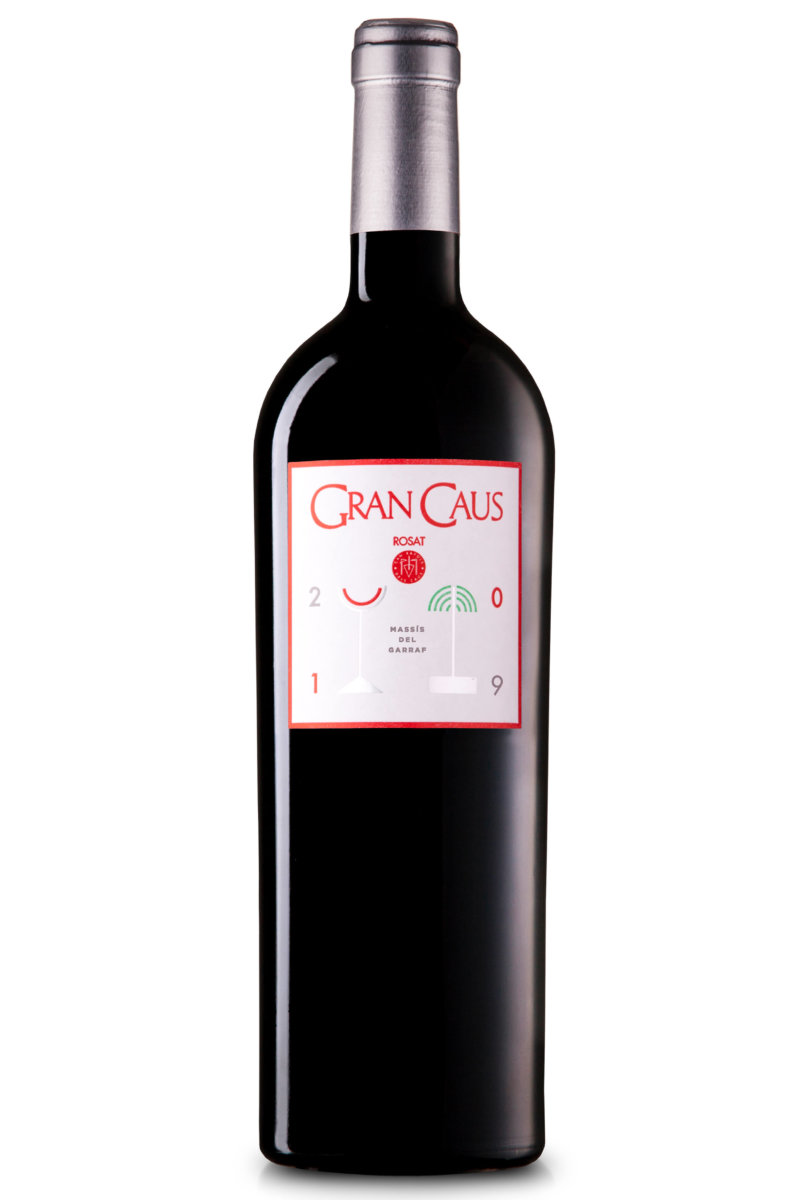
Gran Caus Rosat
CAN RÀFOLS DELS CAUS’
Grape varieties: 100% Merlot
Origin: DO Penedès – Massís del Garraf (Catalunya)
In 1979, visionary wine lover Carlos Esteva founded a winery in an ancient masia (traditional Catalan country house) placed at Massís del Garraf mountain range, under a heavy maritime influence. He was one of the pioneers who introduced international vine varieties in this millenary wine-making region, but he always fought to keep the ‘sense of place’ of Garraf’s unique terroir. In 1990, Esteva made a then-disruptive decision: he used some of his best grapes to make a rosé (this was absolutely not a fashionable kind of wine in those times).
Forget about all those trending Instagram-friendly Provence-styled pale pink rosés. This 100% merlot rosé is a big, BIG, wine. Dark, heavy, round and full-bodied, it explodes inside your mouth like a fruity tsunami and matches perfectly with almost any kind of meal due to its ‘red-wine spirit’ combined with a remarkable freshness. You can (should I say ‘must’?) age it for years in your personal cellar.
You can purchase it here.
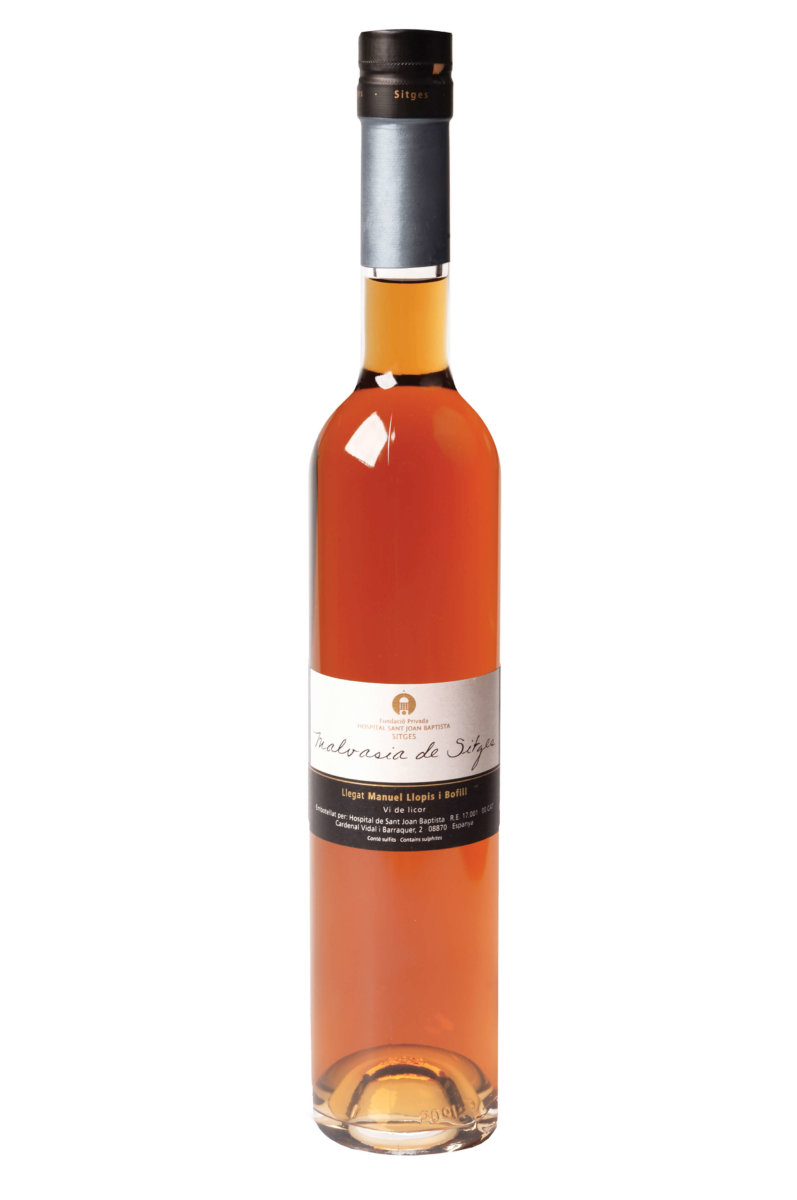
Malvasia Dolça
HOSPITAL DE SANT JOAN BAPTISTA’s
Grape varieties: 100% Malvasia de Sitges
Origin: Massís del Garraf (Penedès, Catalunya)
You know Sitges. Everybody does. It’s a gay-friendly Catalan former fishing town with lovely beaches, stately eclectic art-noveau houses and a huge artistic legacy including the very first Pachá discotheque in the world (five years before Ibiza’s Pachá was opened!) opened in 1967. But did you know that there’s a grape variety that holds its name, no matter where it’s planted? Don’t you worry; it’s not your fault: sadly, even most of the Sitgetans no longer know that Sitges used to be a worldwide winemaking power.
Sometime in the late middle ages—nobody knows exactly how although there are gorgeous legends, some maybe even reliable—Greek vines that came from Monemvasia (‘Malvasia’ in its Catalan transliteration) were planted around the area of Sitges, at the very coastal side of Massís del Garraf. Delicious Greek-styled sweet wines that became one of the European aristocracy and wealthy bourgeoisie’s most favourite drinks for centuries along with Tokaji, Sauternes et al. A bunch of tricky historical circumstances (including the rise of champagne as the fancy drink par excellence, Spanish Civil War and Sitges’ forced transformation into a tourist destination in the 1960s just crushed it all.
But, hallelujah! One of the last prestigious Sitgetà winemakers decided to donate his lands to the town’s millenary charity hospital… under the strict condition (visionary as he was!) that wine from Malvasia grapes had to be made year after year, forever and ever. Thanks to this, the white grape variety named Malvasia de Sitges—nothing to do with other varieties wrongly called malvasía or malmsey—has survived until today. The charity hospital still works—and does a fine job, as a sort of humble and forgotten Hospices de Beaune—while increasing the quality and diversity (they’re making even really interesting dry whites with that grape) of its wines since the mid-2000s.
Malvasia Dolça is the most traditional of its products. An elegant mistela (‘mistelle’) aged for years in traditional huge (600 liters) chestnut barrels whose silky touch and delicate but complex sweetness—cocoa butter, ripe plum, pine nut, etc.—makes you feel like if you were drinking Mediterranean Sea’s sun, saltpeter and history. And indeed you are.
You can purchase it here.
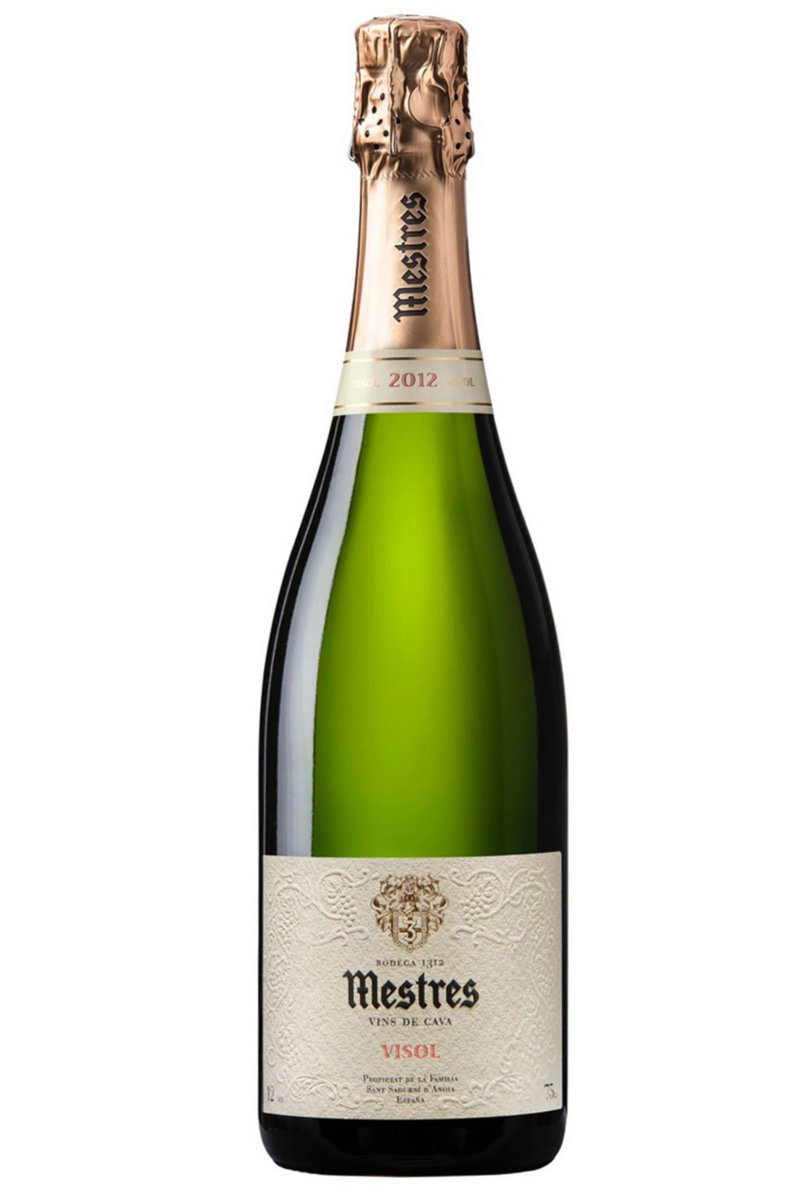
Mestres Visol
CAVES MESTRES’
Grape varieties: Macabeu, Xarel·lo and Parellada
Origin: DO Cava – Sant Sadurní d’Anoia (Alt Penedès, Catalunya)
Let’s talk about bubbles. Champagne or Prosecco? Tyler says, ‘Cava’. It was the 1880s when some Catalan winemakers from Penedès (a large countryside area between Barcelona, Lleida and Tarragona where Catalonia’s sacred mountain Montserrat is situated) started making sparkling wines following the Traditional Method (A.K.A. ‘Méthode Champenoise’) that they had learned in France. A, by far more difficult, long, expensive and craft method than the one used to make Prosecco. It was sold under the adapted name of Champán, Xampany o Xampanya until the French—and their attorneys—got annoyed.
Then the word Cava (subterranean wine cellar) came to name this product and its Designation of Origin (DO). During the 2010s, several of the most ancient and prestigious Cava producers started to leave out the DO—several still do so—due to serious disagreements mainly about pricing policy. They think that the Cava brand has been depreciated because of the natural tendency to equate their gorgeous sparkling wines with Prosecco rather than Champagne. But, you know, the Italians have always been better salesmen than the Spaniards (even than the Catalans!).
Is (good) Cava a merely ‘good imitation’ of Champagne? In fact, it never was. Almost since the beginning, Catalan producers made it mainly with local white grapes (Xarel·lo, Macabeu and Parellada) instead of the classic champenoise trio (Pinot Noir, Meunier and Chardonnay). Of course, climate and soil make the difference as well.
But an enormous landmark was settled in 1945-1948 when the winery Mestres created the very first ‘Brut Nature’ in the world. This means a non-dosage (A.K.A. ‘non-dosé’ or ‘zéro dosage’) sparkling wine: with no sugar nor liqueur d’expedition added. This product was cleverly named Visol (‘vi sol’ = ‘just wine’ in Catalan).
The Mestres are a family involved in winemaking since 1312 (read it again if you need to: 1312!) who started making champenoise sparkling wines in 1928. Their Cavas stand out for their long, long aging: Visol ages for more than 60 months, and the top-ranking Mas Via for—hold your breath—more than 11 years!
Visol is a vintage (of course) Brut Nature Cava revealing charming subtle bubbles and an astonishingly-wide range of evocative aromas and flavours: rosemary honey, flowers like jasmine and mimosa, sandalwood, incense, patisserie, dried apricots and figs, marzipan… Despite its long aging period, autumnal character and creamy touch, it keeps nerve and tension due to a noble acidity, and its aftertaste is long, well-balanced and kind. Don’t you think it’s time to give Champagnes and Proseccos a well-deserved vacation?
You can purchase it here.
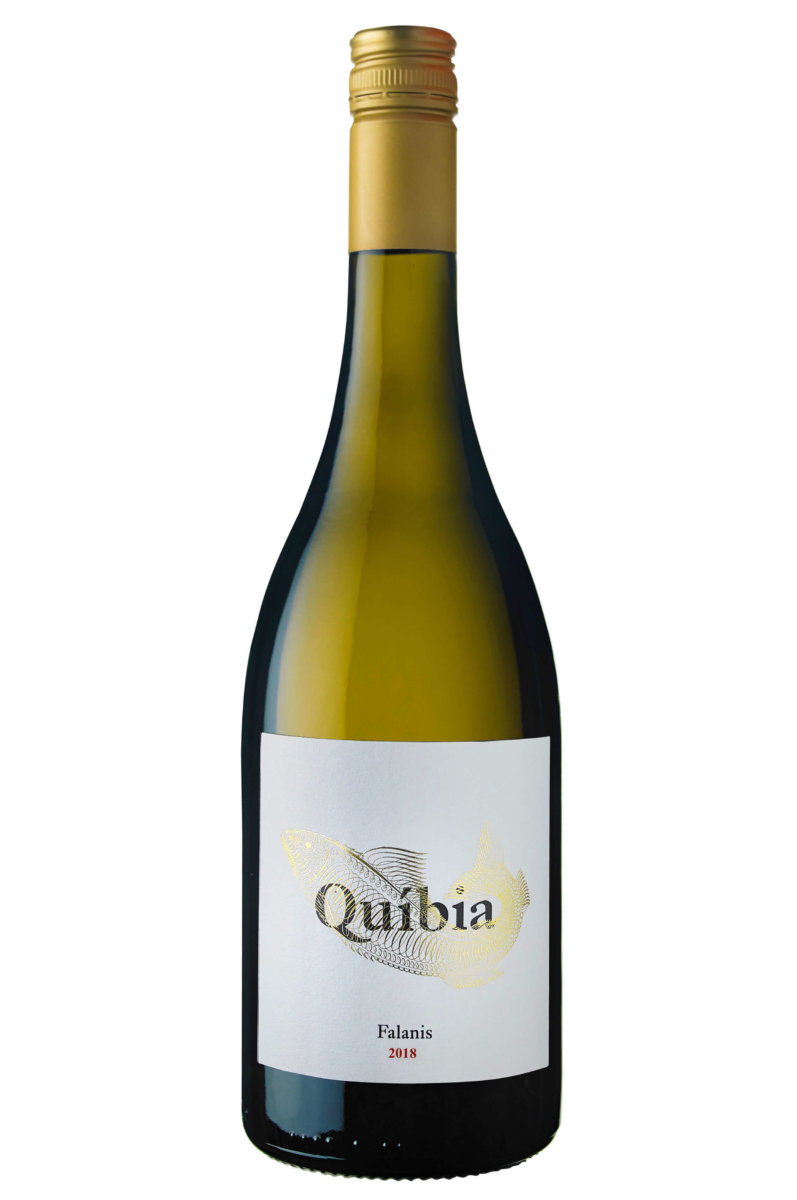
Quíbia
ÀNIMA NEGRA’s
Grape varieties: Callet, Premsal Blanc and Giró Ros
Origin: IGP Illes Balears – Felanitx (Mallorca)
Mallorca, as you likely know, is the biggest of the Balearic Islands, as its name—directly derived from ancient Latin—reflects. As with Sitges, you’ll maybe mentally correlate this place with lovely landscapes, beautiful beaches and not-always-happy-ending fiesta. But once again we’re talking about a place that has been a stage for a millennium—and quite interesting—of history in which wine has been deeply involved.
In 1994, a bunch of brave against-the-grain Majorcan young persons founded a winery named Ànima Negra (‘Black Soul’) in an ancient country house where wine had been made since the 13th century. They pioneered the quest to recover local and ancestral grape varieties that had been almost forgotten, often scorned, converting them into great wines; a quest that fortunately has become a trend since then in all of the Spanish wine regions.
Quíbia certainly is a distinctive dry white wine. In almost its 50% it’s a blanc de noirs since the winery’s-hallmark ‘Callet’ local variety is a red grape. Maybe due to this, it reveals unexpectedly subtle appetizing ‘red fruits’ and ‘roses’ aromas. But it’s essentially a (really!) clean and (really!) sharp white wine that, IMHO, you could enjoy as a sort of —may the Lord protect me!—Mediterranean version of a Sancerre. Okay, the die is cast: it’s by far more interesting than a Sancerre. May I burn in hell.
White flowers, citrus and pomegranate fill your nose and mouth before a long aftertaste which reveals an elegant bitterness. But above everything else there’s the sense of place: this wine tastes salty as if you were licking Poseidon’s feet. Maybe this doesn’t sound too appealing to you, especially if you’re not used to Mediterranean wines. But believe me, Quíbia is such an enjoyable, even easy-drinking, white wine! And, after all… how often do you have the chance to lick a Greek god’s feet?
You can purchase it here.
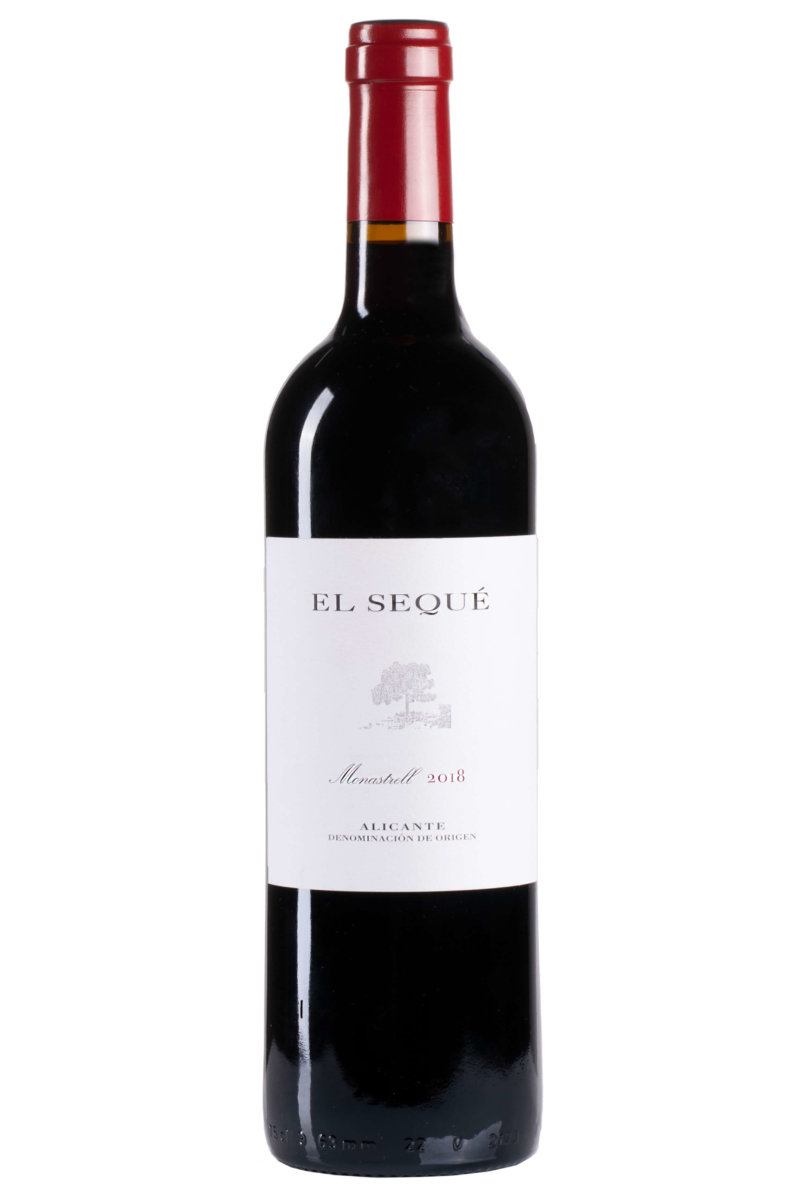
El Sequé
ARTADI – BODEGAS Y VIÑEDOS EL SEQUÉ’s
Grape varieties: 100% Monastrell
Origin: DO Alicante
Sure you’ve heard about a grape called Mourvèdre. It’s a regular guest inside your beloved pale-pink fancy rosés from Provence. It also stars as a guest (along with Grenache and Syrah/Shiraz) inside many reds from Côtes du Rhône. In fact, this famous ‘GSM Blend’ has been widely adopted by New World winemakers, especially in Australia. What about that other grape called Mataro, also quite common in Australia and California? Not a stranger, right?
Then, what if I tell you about a Spanish Mediterranean grape called Monastrell? I bet things get worse. And that’s bizarre, because Mourvèdre, Mataro and Monastrell… are essentially all the same grape. Now, what if I say that, according to many experts like Jancis Robinson, Monastrell is the original one? It seems to have been introduced in Valencia some time ago (around five centuries BC!) by the Phoenicians, and there was an enormous clue that wine experts overlooked for decades: Morvedre was the ancient name for the Valencian city now called Sagunt… and Mataró is a coastal city 20 miles from Barcelona which held an intense wine trade since the 16th century ‘till the 1900s. Does this blow your mind? Take it easy! We’ve already settled that Italians had always been better as salesmen than the Spaniards (even than the Catalans!); what to say about the French?
It was 1999 when Juan Carlos López de Lacalle, CEO of the very prestigious Artadi (then one of Rioja’s top wineries), and his friend the also winemaker Agapito Rico created Bodegas y Viñedos El Sequé in Alacant (Alicante), in the southeastern coast of the Iberian Peninsula. What pushed López de Lacalle to work on old vines in an arid land 400 miles away from his well-established estate in the Basque Country? Nothing but the love for Monastrell.
Obviously Monastrell wines have little to do with Mourvèdres and Mataros due to climate and soils. In order to explain clearly and concisely the sensations Monastrell wines offer I’ll tell you that if Red Grenache was Aerosmith then Monastrell would be Metallica. Similar—even a relative if you want—but heavier, bolder and mightier. El Sequé is in my point of view a paradigmatic Monastrell: a well-balanced but crushing avalanche of ripe berries surfed by some chocolate, woody and earthy notes; its thyme and eucalyptus brush-strokes and its good acidity provide freshness and nerve, keeping this dark-purple wine far away from being dull. Without a doubt, the Enter Sandman of red wines.
You can purchase it here.
